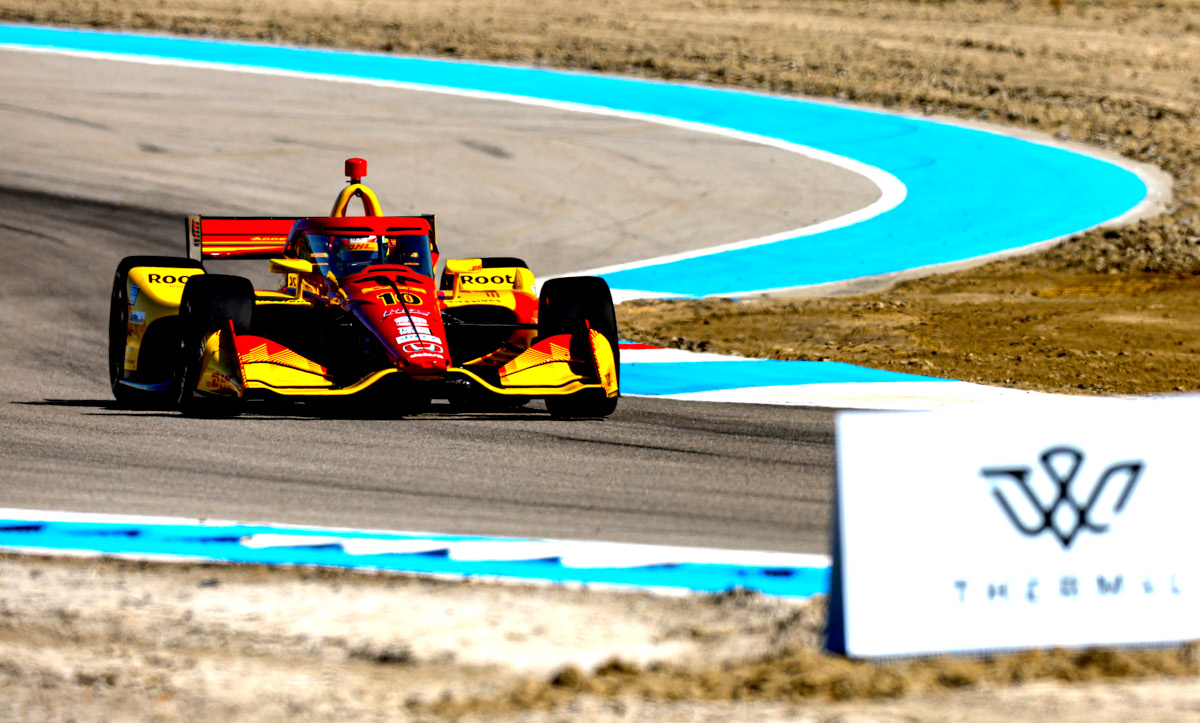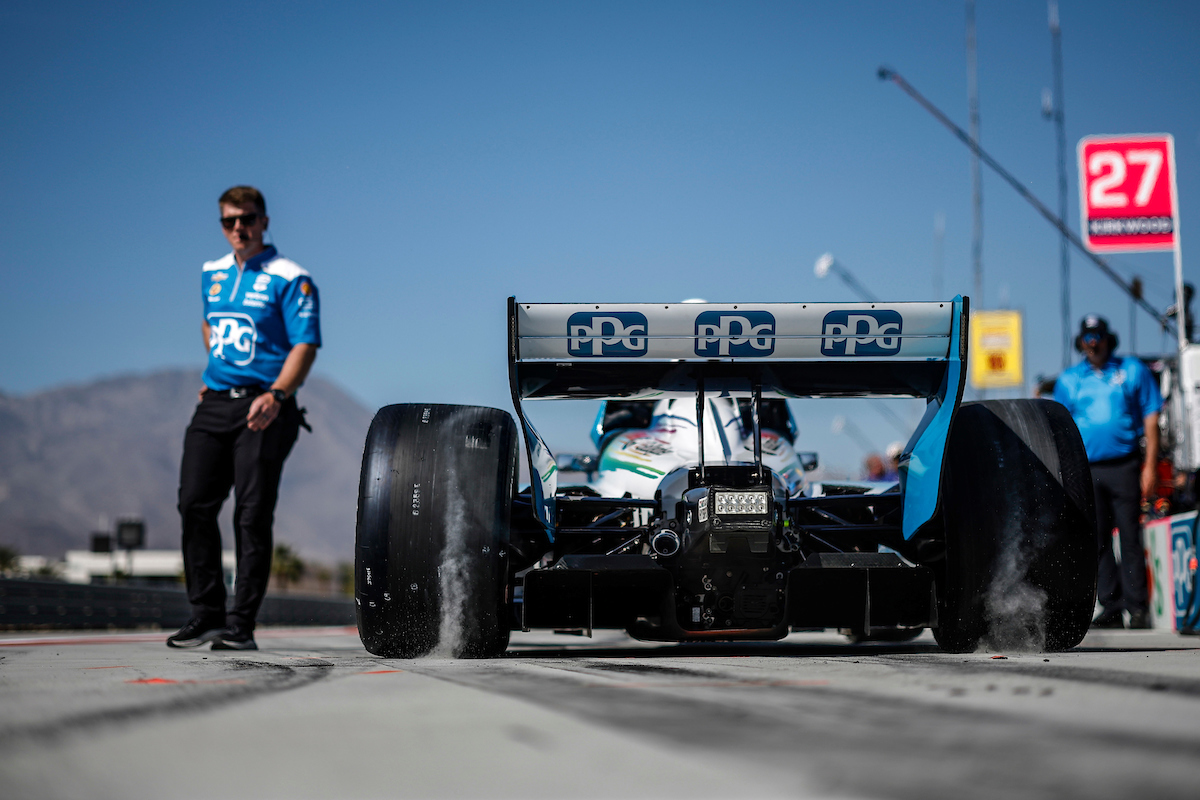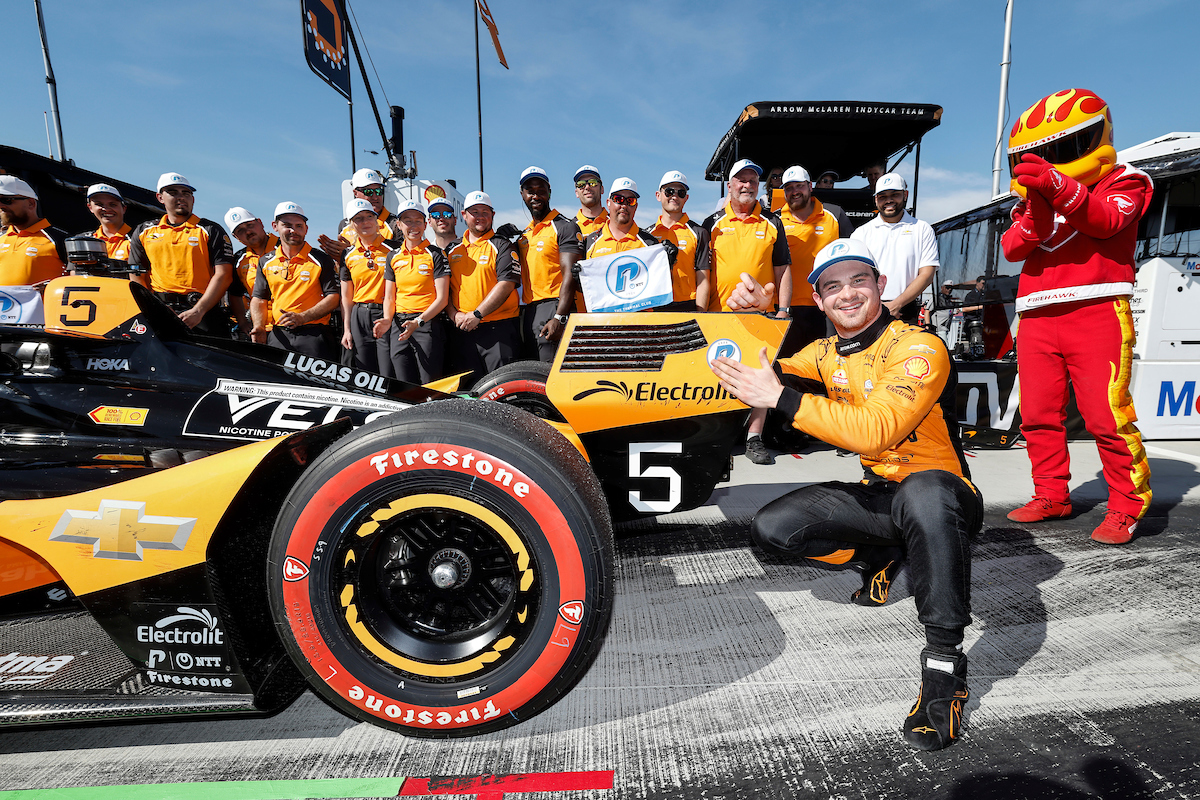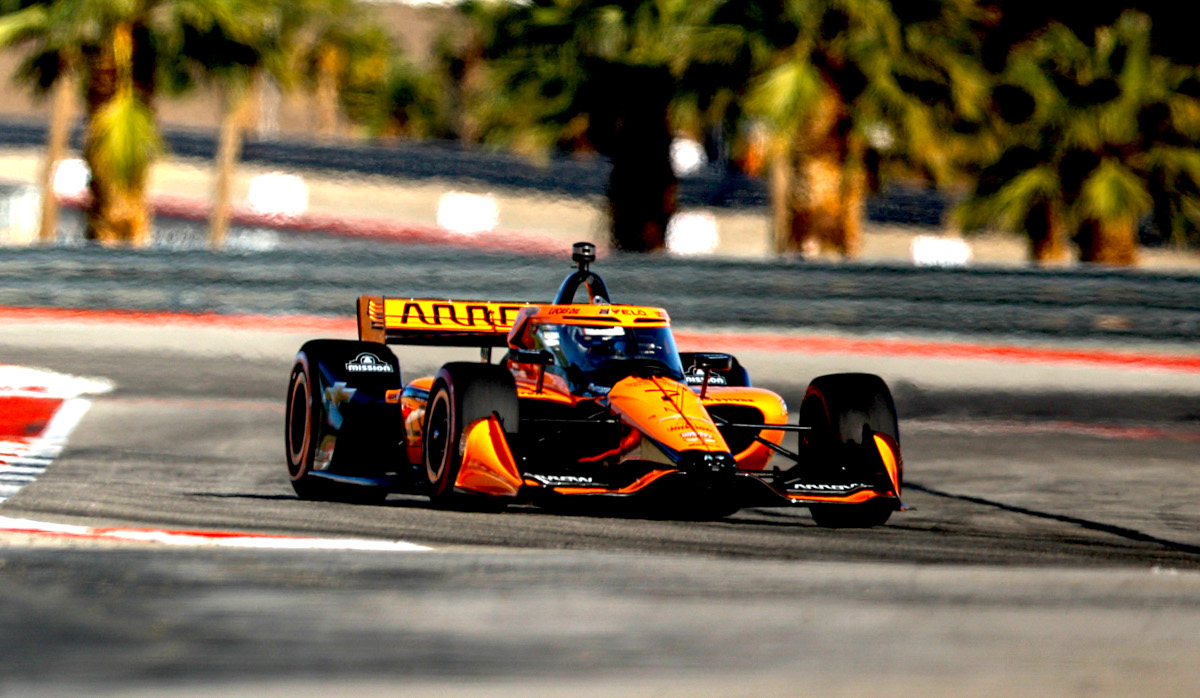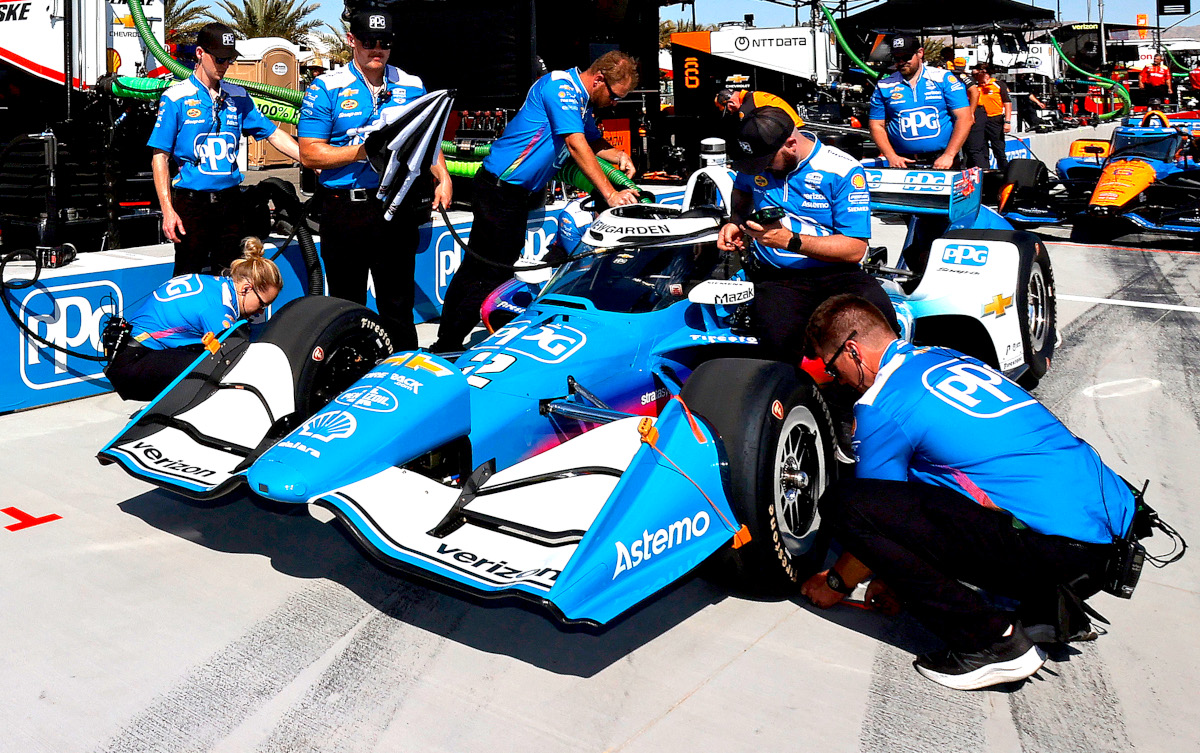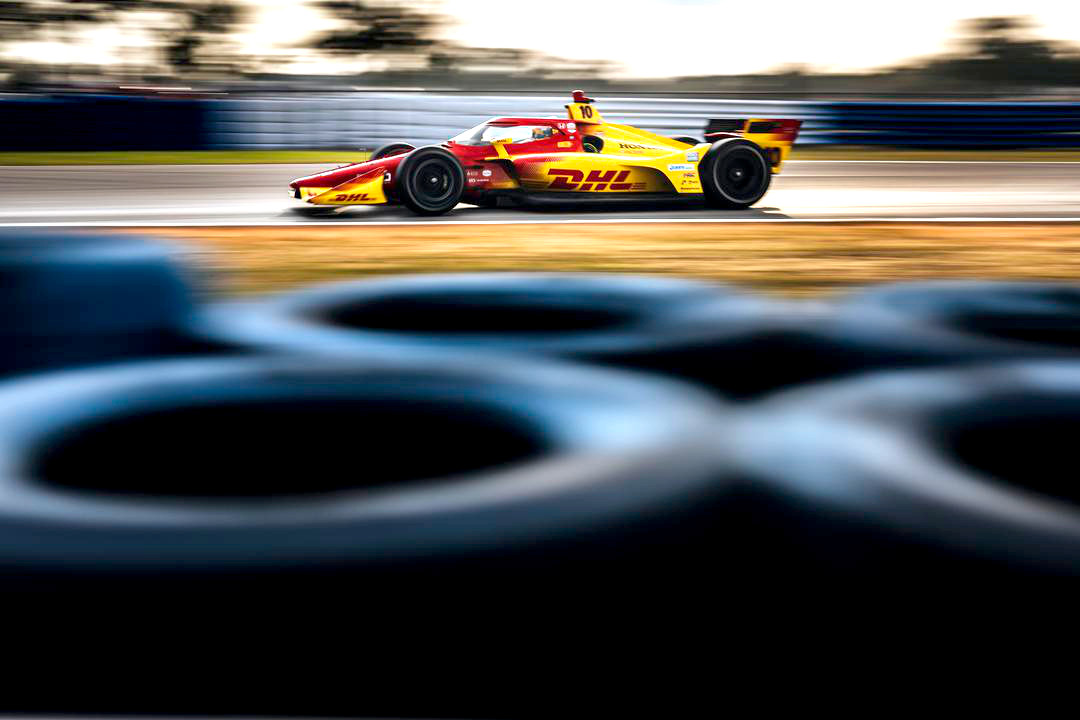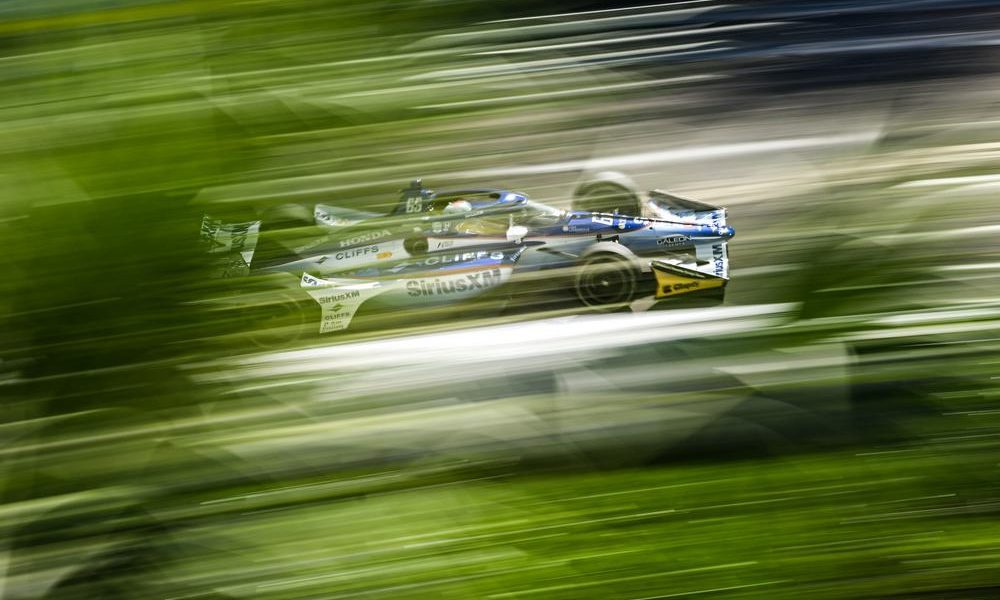The inaugural Thermal Club IndyCar Grand Prix saw Pato O’Ward lead the field of 27 drivers for more than 50 of the 65 laps, but his pole position and dominance wasn’t rewarded with victory.
It was Alex Palou in the No. 10 car and superb pit strategy from his Chip Ganassi Racing team that saw the Spaniard finish the race on new Firestone alternate tires while O’Ward was on new primaries, and after facing an 11s deficit leaving the pits on the final stop, Palou chased O’Ward down, took the lead on the 56th lap, and rocketed away to claim his second consecutive win of the season.
The race was a processional affair until the last pit stop exchange, but O’Ward and teammate Christian Lundgaard, who started first and second, were able to score plenty of points after completing the podium positions.
“We couldn’t be happier for the entire team, including the No. 10 car,” said Palou’s race strategist Barry Wanser, who made the fateful call that propelled his driver to the win. “We saved the sticker (alternates) for the end hoping to go for the win, and it worked for us.”
Palou was the first driver home for Honda with the two Chevy-powered drivers in tow. Behind the podium finishers, Andretti Global’s Colton Herta, Meyer Shank Racing’s Felix Rosenqvist, and Team Penske’s Will Power—who started 21st — completed the top six.
The hot event in 90-degree weather was run under clear blue skies in front of approximately 5000 fans at the 3.067-mile, 17-turn road course situated in California’s Coachella Valley.
We missed it,” O’Ward said of the strategy call that saw his No. 5 Chevy come up 10.1s short of competing a flag-to-flag result.
“It’s always easy to be smart after the fact,” added Lundgaard.
After the top six, it was a strong day for MSR with Rosenqvist and teammate Marcus Armstrong in seventh, and the same was true for Ed Carpenter Racing which had Alexander Rossi earn eighth and Christian Rasmussen secure 12th. Graham Rahal also improved from 18th to 11th.
Bad days were had by Penske’s Scott McLaughlin who was hit and spun by Devlin DeFrancesco on the final parade lap and then had overheating issues with his energy recovery system, and PREMA Racing’s Callum Ilott, who was involved in an accident that shot his car skyward on the first lap.
Key moment:
Wanser’s decision to save and use new alternates to race to the end, and Palou’s dogged driving, chasing down and battling Lundgaard for second and his precise efforts on the limit to erase a huge deficit to O’Ward and drive away by a big margin.
Race notes:
The McLaren duo of Pato O’Ward and Christian Lundgaard led the field to green and got through Turn 1 without incident, but Marcus Ericsson did run wide moments later and lost a number of positions. Callum Ilott was shunted as well.
On the run to the green flag, Devlin DeFrancesco and Scott McLaughlin made contact which led to both spinning.
Lap 3 and O’Ward has 2.1s over Lundgaard and 2.6s over Alex Palou. Top three drivers are on alternates, with only O’Ward on new tires.
Team Penske’s rough qualifying where Josef Newgarden was the best of the trio in 17th isn’t working to their favor so far in the race; Newgarden’s the top Penske car after five laps in 22nd, Will Power’s 23rd, and McLaughlin’s in 25th.
Lap 5 and Palou’s 2.5s up on his teammate and 4.5s on a fading Palou.
Colton Herta, the first driver on primaries, is fourth, 7.9s arrears.\
Lap 9 and O’Ward’s running away with 5.1s over Lundgaard and 6.0s over Palou. Herta’s 12.1s back on primaries.
Lap 10 and Palou is just 0.2s behind Lundgaard.
Lap 11 and Lundgaard pits to trade alternates for primaries. Felix Rosenqvist follows.
Lap 14 and O’Ward’s 8.0s ahead of Palou and 20.4 on Herta.
Lap 15 and Herta’s in to take another set of primaries.
Lap 17 and Palou’s down 8.9s, but pits to remove his used alternated for new primaries. Ericsson’s off track again.
Lap 18 and O’Ward’s in for new primaries.
Lap 19 and Rossi’s in to take alternates.
Lap 21 and McLaughlin’s in the pits with an overheating energy recovery system.
Lap 23 and O’Ward continues to cruise up front with 2.3s over Lundgaard and 11.1s on Palou. Of the top five drivers, only Lundgaard is on alternates. Kyle Kirkwood is in fourth ahead of teammate Herta and Marcus Armstrong in sixth.
Power has been active, passing his way up to 12th.
Lap 28 and there’s nothing of interest happening. O’Ward is 3.8s clear of Lundgaard and 12.1s out on Palou. Kirkwood’s 26.9s back in fourth.
Lap 29 and Power pits from 10th. Kirkwood pits as well.
Lap 31 and Lundgaard pits from second.
The FOX broadcast goes dark. After running a bunch of commercials, FOX switches to the NASCAR Cup race.
[lawrence-auto-related count=3 category=1408]
Lap 32—halfway point–and Palou is 10.9 behind O’Ward.
Lap 33 and O’Ward pits.
Lap 34 and Palou leads O’Ward by 23.4s.
Lap 35 and Palou pits from the lead. O’Ward returns to the lead.
Lap 39 and O’Ward has 4.4s on Lundgaard and 8.7s on Palou. Kirkwood is 26.4s behind, Herta’s 28.0s down, and Felix Rosenqvist is sixth, albeit 31.6s shy of the leader.
Lap 40 and Power is ninth and Newgarden is 10th as they are rallying hard to score good finishes.
Lap 42 and the FOX broadcast is back. Wild.
Lap 43 and Palou is challenging Lundgaard for second.
Lap 45 and O’Ward is up 8.3s on Lundgaard and 8.7s on Palou while Kirkwood is 28.9s shy.
Palou’s running out of grip. Big slide and his gap to Lundgaard has doubled.
Lap 48 and Lundgaard pits from second for new primaries.
Rosenqvist also stopped, but was sent with the outside wheel gun in the way; he drove over it but the series did not assess a penalty.
Lap 50 and Palou pits while 10.8s down to Palou to take new alternates. He returns right behind Lundgaard in third.
Lap 50 and O’Ward pits and takes a new set of primaries.
Lap 51 and Palou takes second from Lundgaard after some thrilling back and forth action.
Lap 52 and O’Ward’s lead is 7.6s over Palou. New primaries vs new alternates.
Lap 54 and Palou’s cut the lead to 2.4s.
Lap 56 and the lead is down to 0.4s.
Lap 56 and Palou takes the lead.
Lap 61 and Palou’s got 6.1s on O’Ward and sauntering to a second straight win.
Lap 65—the Palou Show is over.



